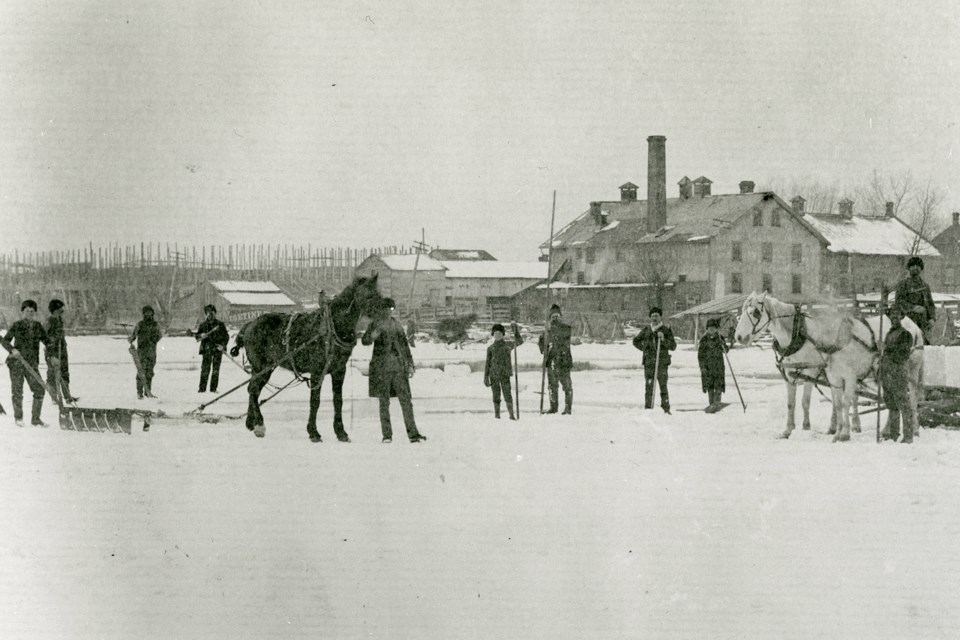With the current heat spell putting thoughts of winter on the back burner, it might be difficult to imagine Kempenfelt Bay freezing over.
Winter will come and the ice with it, along with fisher folk, some of whom travel great distances for the whitefish, perch and other species found locally.
The economic spin-off from the sport can be substantial, but there was a time when the ice itself was a huge money-maker.
Beginning in the 1870s and continuing up to as late as the 1950s, when the ice on Lake Simcoe could be anywhere from 10 to 20 inches thick, it was harvested and used locally and even south of the border.
“The need for ice was obvious. There was no refrigeration without it,” says Su Murdoch, a heritage consultant based in Barrie and co-author of the book Beautiful Barrie. “The lake had really good water and froze solid and it was an easy harvest.”
The biggest ice-harvesting companies worked out of Belle Ewart in Innisfil, because there was a spur line for the train.
“There were big American companies that came up here and cut ice and they sold it all over the United States and used it in hotels and restaurants and to anybody who needed ice,” Murdoch says. “A lot of their ice was contracted to be shipped to the States.
"They shipped it in sawdust in box cars all over.”
But Barrie was no slouch when it came to harvesting ice.
“All around the bay there would be ice houses, some of them larger than others: the bottom of Mary Street and all in that area there were ice houses,” she says. “Locally, people cut ice for the same reasons; they needed it for refrigeration. It was just one of those things you had to do.”
It kept Barrie-area people busy at a time when they might not otherwise be employed.
“It was big business and it was winter work. So if you were a farmer or a summer-dependent labourer, you got a chance to have a job in the winter,” Murdoch says.
“They’d be cutting with a big circular saw and the bigger companies had actual conveyor systems. You’d hook (the block of ice) and load it onto the conveyor and run it to the shoreline,” she adds. “A smaller production would probably be loading it onto a horse-drawn sled and bringing it to shore.”
From there it would be transported for storage to a local ice house, some of which were located at the bottom of Mary and Peel streets.
“The ice houses were obviously big and usually in the peak of the roof at the gable end (the part of a wall that encloses the end of a pitched roof) there would’ve been a hoist system to bring the blocks of ice up the to the second level,” Murdoch says.
From there it would be distributed to local homes and businesses.
“It was delivered after being stored in the big warehouses in sawdust. It would stored all through the summer. It was well packed and kept until the next winter when you could get fresh ice,” she adds.
Most homeowners and businesses wouldn’t necessarily have a huge supply of ice unless they were far away from a delivery option, Murdoch says.
“It’s better to store a lot of ice in one spot because it keeps itself cold. If you have a single block it has more chance of melting,” she says. “Obviously, the farther it went it was better to use the train. With local delivery, just as with milk, it would be horse-drawn at first and then later it would be trucked.
“It would parallel the innovations in transportation. You got your milk (delivered); you got your ice (delivered),” she adds.
